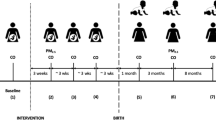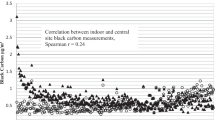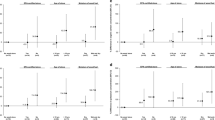Abstract
Recent studies have highlighted the presence of endotoxin in indoor air and its role in respiratory morbidities. Burning of household fuels including unprocessed wood and dried animal dung could be a major source of endotoxin in homes. We measured endotoxin levels in different size fractions of airborne particles (PM10, PM2.5, and PM1), and estimated the deposition of particle-bound endotoxin in the respiratory tract. The study was carried out in homes burning solid biomass fuel (n=35) and LPG (n=35). Sample filters were analyzed for endotoxin and organic carbon (OC) content. Household characteristics including temperature, relative humidity, and carbon dioxide levels were also recorded. Multivariate regression models were used to estimate the contributing factors for airborne endotoxin. Respiratory deposition doses were calculated using a computer-based model. We found a higher endotoxin concentration in PM2.5 fractions of the particle in both LPG (median: 110, interquartile range (IQR) 100–120 EU/m3) and biomass (median: 350, IQR: 315–430 EU/m3) burning homes. In the multivariate-adjusted model, burning of solid biomass fuel (β: 67; 95% CI: 10.5–124) emerged as the most significant predictor followed by OC (β: 4.7; 95% CI: 2.7–6.8), RH (β: 1.6; 95% CI: 0.76–2.4), and PM2.5 (β: 0.45; 95% CI: 0.11–0.78) for airborne endotoxin (P<0.05). We also observed an interaction between PM organic carbon content and household fuel in predicting the endotoxin levels. The model calculations showed that in biomass burning homes, total endotoxin deposition was higher among infants (59%) than in adult males (47%), of which at least 10% of inhaled endotoxin is deposited in the alveolar region of the lung. These results indicate that fine particles are significant contributors to the deposition of endotoxin in the alveolar region of the lung. Considering the paramount role of endotoxin exposure, and the source and timing of exposure on respiratory health, additional studies are warranted to guide evidence-based public health interventions.
This is a preview of subscription content, access via your institution
Access options
Subscribe to this journal
Receive 6 print issues and online access
$259.00 per year
only $43.17 per issue
Buy this article
- Purchase on Springer Link
- Instant access to full article PDF
Prices may be subject to local taxes which are calculated during checkout


Similar content being viewed by others
References
Lim SS, Vos T, Flaxman AD, Danaei G, Shibuya K, Adair-Rohani H et al. A comparative risk assessment of burden of disease and injury attributable to 67 risk factors and risk factor clusters in 21 regions, 1990-2010: a systematic analysis for the Global Burden of Disease Study 2010. Lancet 2012; 380: 2224–2260.
Forouzanfar MH, Alexander L, Anderson HR, Bachman VF, Biryukov S, Brauer M et al. Global, regional, and national comparative risk assessment of 79 behavioural, environmental and occupational, and metabolic risks or clusters of risks in 188 countries, 1990–2013: a systematic analysis for the Global Burden of Disease Study 2013. Lancet 2015; 386: 2287–2323.
Sussan TE, Ingole V, Kim J-H, McCormick S, Negherbon J, Fallica J et al. Source of biomass cooking fuel determines pulmonary response to household air pollution. Am J Respir Cell Mol Biol 2014; 50: 538–548.
Min K-B, Min J-Y . Exposure to household endotoxin and total and allergen-specific IgE in the US population. Environ Pollut 2015; 199C: 148–154.
Gordon SB, Bruce NG, Grigg J, Hibberd PL, Kurmi OP, Lam K-BH et al. Respiratory risks from household air pollution in low and middle income countries. Lancet Respir Med 2014; 2: 823–860.
Norbäck D, Markowicz P, Cai G-H, Hashim Z, Ali F, Zheng Y-W et al. Endotoxin, ergosterol, fungal DNA and allergens in dust from schools in Johor Bahru, Malaysia-associations with asthma and respiratory infections in pupils. PLoS One 2014; 9: e88303.
Lawson JA, Dosman JA, Rennie DC, Beach JR, Newman SC, Crowe T et al. Endotoxin as a determinant of asthma and wheeze among rural dwelling children and adolescents: a case-control study. BMC Pulm Med 2012; 12: 56.
Jacobs JH, Krop EJM, Borras-Santos A, Zock J-P, Taubel M, Hyvarinnen A et al. Endotoxin levels in settled airborne dust in European schools: the HITEA school study. Indoor Air 2014; 24: 148–157.
Delfino RJ, Staimer N, Tjoa T . Personal endotoxin exposure in a panel study of school children with asthma. Environ Health 2011; 10: 69.
Semple S, Devakumar D, Fullerton DG, Thorne PS, Metwali N, Costello A et al. Airborne endotoxin concentrations in homes burning biomass fuel. Environ Health Perspect 2010; 118: 988–991.
Liao VH-C, Chio C-P, Chou W-C, Ju Y-R, Liao C-M . Modeling human health risks of airborne endotoxin in homes during the winter and summer seasons. Sci Total Environ 2010; 408: 1530–1537.
Smit LAM, Heederik D, Doekes G, Blom C, van Zweden I, Wouters IM . Exposure-response analysis of allergy and respiratory symptoms in endotoxin-exposed adults. Eur Respir J 2008; 31: 1241–1248.
Dales R, Miller D, Ruest K, Guay M, Judek S . Airborne endotoxin is associated with respiratory illness in the first 2 years of life. Environ Health Perspect 2005; 114: 610–614.
McNamara M, Thornburg J, Semmens E, Ward T, Noonan C . Coarse particulate matter and airborne endotoxin within wood stove homes. Indoor Air 2013; 23: 498–505.
Pavilonis BT, Anthony TR, O’Shaughnessy PT, Humann MJ, Merchant JA, Moore G et al. Indoor and outdoor particulate matter and endotoxin concentrations in an intensely agricultural county. J Expo Sci Environ Epidemiol 2013; 23: 299–305.
Williams DAL, McCormack MC, Matsui EC, Diette GB, McKenzie SE, Geyh AS et al. Cow allergen (Bos d2) and endotoxin concentrations are higher in the settled dust of homes proximate to industrial-scale dairy operations. J Expo Sci Environ Epidemiol 2014; 26: 42–47 1–6.
Bari MA, MacNeill M, Kindzierski WB, Wallace L, Héroux M-È, Wheeler AJ . Predictors of coarse particulate matter and associated endotoxin concentrations in residential environments. Atmos Environ 2014; 92: 221–230.
Adhikari A, Lewis JS, Reponen T, Degrasse EC, Grimsley LF, Chew GL et al. Exposure matrices of endotoxin, (1→3)-β-d-glucan, fungi, and dust mite allergens in flood-affected homes of New Orleans. Sci Total Environ 2010; 408: 5489–5498.
Mazique D, Diette GB, Breysse PN, Matsui EC, McCormack MC, Curtin-Brosnan J et al. Predictors of airborne endotoxin concentrations in inner city homes. Environ Res 2011; 111: 614–617.
Hadina S, Weiss JP, McCray PB, Kulhankova K, Thorne PS . MD-2-dependent pulmonary immune responses to inhaled lipooligosaccharides: effect of acylation state. Am J Respir Cell Mol Biol 2008; 38: 647–654.
Perzanowski MS, Miller RL, Thorne PS, Barr RG, Divjan A, Sheares BJ et al. Endotoxin in inner-city homes: associations with wheeze and eczema in early childhood. J Allergy Clin Immunol 2006; 117: 1082–1089.
Odisha - National Health Mission. Available at: http://nrhm.gov.in/nrhm-in-state/state-wise-information/odisha.html#state_profile (accessed 30 November 2014).
Dekati® PM10 Impactor | DEKATI. Available at: http://www.dekati.com/products/Fine Particle Measurement/Dekati%C2%AE PM10 Impactor (accessed 12 March 2015).
See SW, Balasubramanian R . Chemical characteristics of fine particles emitted from different gas cooking methods. Atmos Environ 2008; 42: 8852–8862.
Zappoli S, Andracchio A, Fuzzi S, Facchini MC, Gelencsér A, Kiss G et al. Inorganic, organic and macromolecular components of fine aerosol in different areas of Europe in relation to their water solubility. Atmos Environ 1999; 33: 2733–2743.
ICRP. Human respiratory tract model for radiological protection. Ann ICRP 1994; 24 ((1–3)): 1–482.
Petersen S, Jensen KL, Pedersen ALS, Rasmussen HS . The effect of increased classroom ventilation rate indicated by reduced CO2 concentration on the performance of schoolwork by children. Indoor Air 2015 (doi:10.1111/ina.12210).
Rosati JA, Yoneda KY, Yasmeen S, Wood S, Eldridge MW . Respiratory health and indoor air pollution at high elevation. Arch Environ Occup Health 60: 96–105.
Traversi D, Alessandria L, Schilirò T, Chiadò Piat S, Gilli G . Meteo-climatic conditions influence the contribution of endotoxins to PM10 in an urban polluted environment. J Environ Monit 2010; 12: 484–490.
Frankel M, Bekö G, Timm M, Gustavsen S, Hansen EW, Madsen AM . Seasonal variations of indoor microbial exposures and their relation to temperature, relative humidity, and air exchange rate. Appl Environ Microbiol 2012; 78: 8289–8297.
Kujundzic E, Hernandez M, Miller SL . Particle size distributions and concentrations of airborne endotoxin using novel collection methods in homes during the winter and summer seasons. Indoor Air 2006; 16: 216–226.
Sarangapani R . Modeling particle deposition in extrathoracic airways. Aerosol Sci Technol 2000; 32: 72–89.
Liao VH-C, Chou W-C, Chio C-P, Ju Y-R, Liao C-M . A probabilistic approach to quantitatively assess the inhalation risk for airborne endotoxin in cotton textile workers. J Hazard Mater 2010; 177: 103–108.
Shi J, Mehta AJ, Hang JQ, Zhang H, Dai H, Su L et al. Chronic lung function decline in cotton textile workers: roles of historical and recent exposures to endotoxin. Environ Health Perspect 2010; 118: 1620–1624.
MacNeill SJ, Sozanska B, Danielewicz H, Debinska A, Kosmeda A, Boznanski A et al. Asthma and allergies: is the farming environment (still) protective in Poland? The GABRIEL Advanced Studies. Allergy 2013; 68: 771–779.
Sordillo JE, Hoffman EB, Celedón JC, Litonjua AA, Milton DK, Gold DR . Multiple microbial exposures in the home may protect against asthma or allergy in childhood. Clin Exp Allergy 2010; 40: 902–910.
Eriksson J, Ekerljung L, Lötvall J, Pullerits T, Wennergren G, Rönmark E et al. Growing up on a farm leads to lifelong protection against allergic rhinitis. Allergy 2010; 65: 1397–1403.
Caudri D, Wijga A, Scholtens S, Kerkhof M, Gerritsen J, Ruskamp JM et al. Early daycare is associated with an increase in airway symptoms in early childhood but is no protection against asthma or atopy at 8 years. Am J Respir Crit Care Med 2009; 180: 491–498.
Michel S, Busato F, Genuneit J, Pekkanen J, Dalphin J-C, Riedler J et al. Farm exposure and time trends in early childhood may influence DNA methylation in genes related to asthma and allergy. Allergy 2013; 68: 355–364.
Poole JA, Romberger DJ . Immunological and inflammatory responses to organic dust in agriculture. Curr Opin Allergy Clin Immunol 2012; 12: 126–132.
Acknowledgements
We acknowledge the cooperation of the households during air sampling. We thank Karunakar Panda of AIPH for assistance with household PM measurements. This study was funded in part by NICHD Grant R01 HD 53719 and is being continued as part of an ongoing IMMENSE (Impact of Maternal Environmental and Socioeconomic factors on child health and development) research project in India funded by a grant from the University of Nebraska Foundation.
Author information
Authors and Affiliations
Corresponding author
Ethics declarations
Competing interests
The authors declare no conflict of interest.
Rights and permissions
About this article
Cite this article
Padhi, B., Adhikari, A., Satapathy, P. et al. Predictors and respiratory depositions of airborne endotoxin in homes using biomass fuels and LPG gas for cooking. J Expo Sci Environ Epidemiol 27, 112–117 (2017). https://doi.org/10.1038/jes.2016.5
Received:
Accepted:
Published:
Issue Date:
DOI: https://doi.org/10.1038/jes.2016.5
Keywords
This article is cited by
-
Interrelationship of Indoor Particulate Matter and Respiratory Dust Depositions of Women in the Residence of Dhanbad City, India
Environmental Science and Pollution Research (2022)



